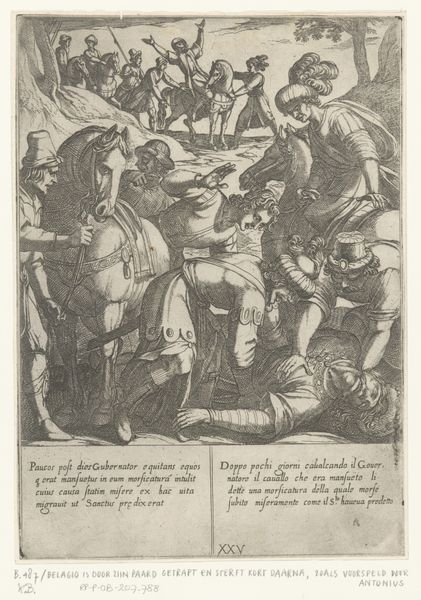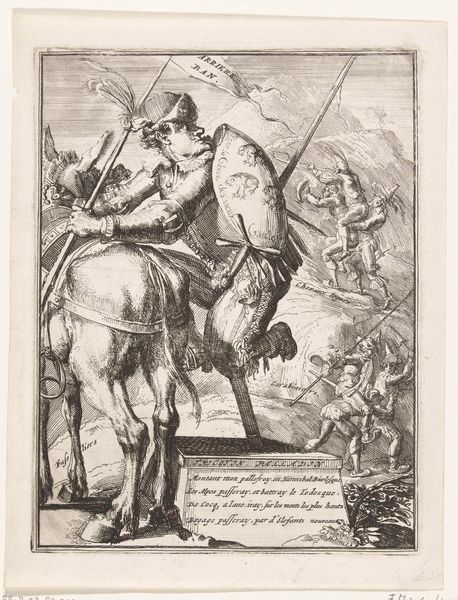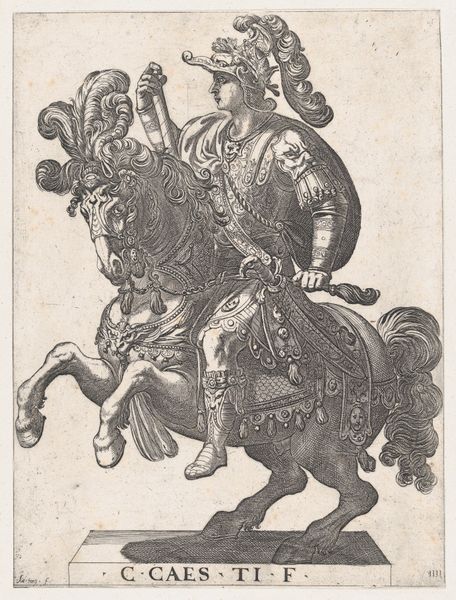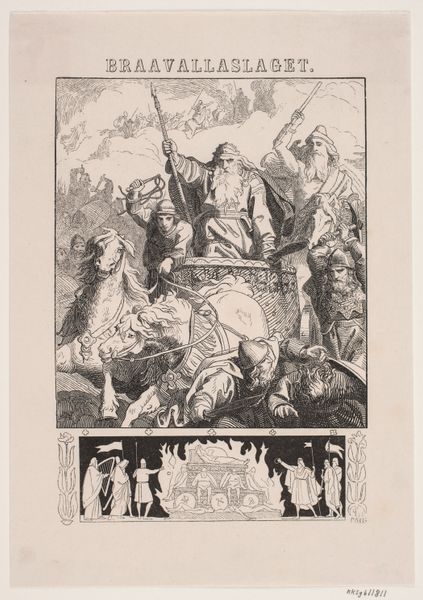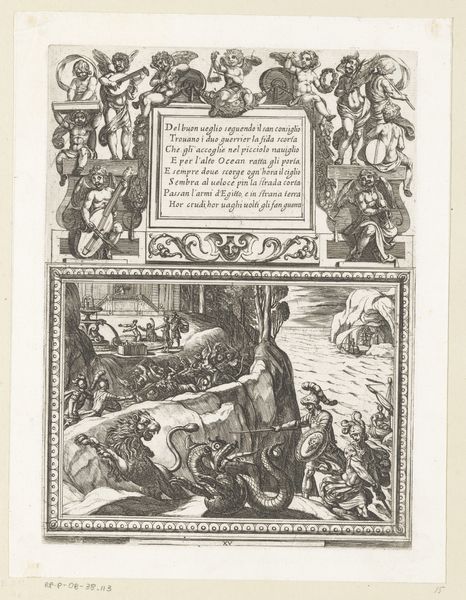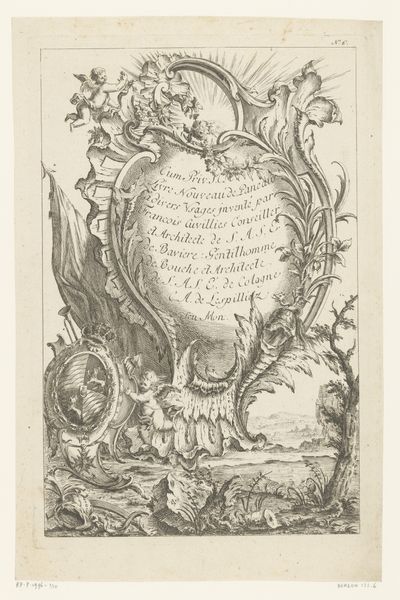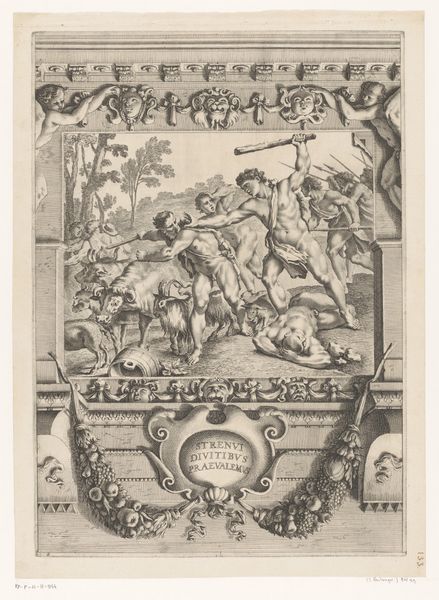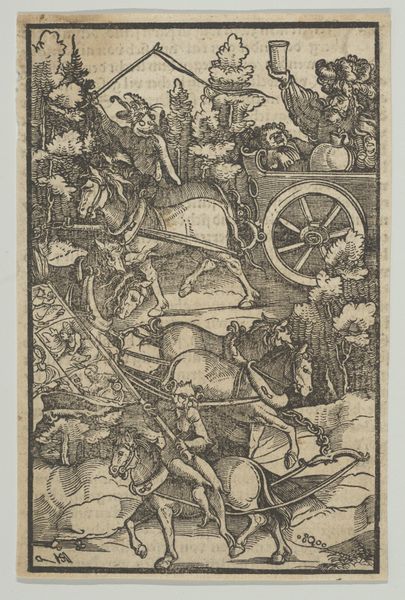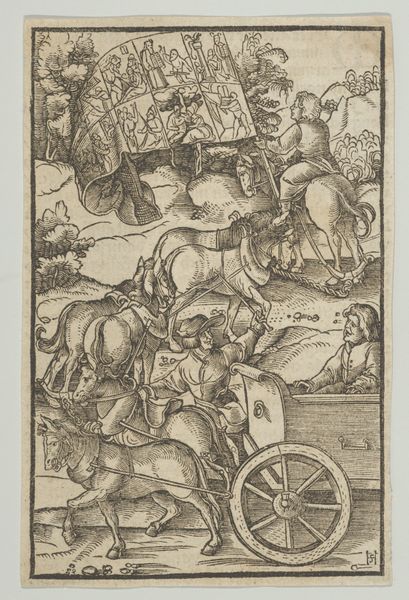
print, engraving
#
baroque
# print
#
engraving
Dimensions: height 203 mm, width 152 mm
Copyright: Rijks Museum: Open Domain
Curator: Well, let's dive into this interesting piece from 1706, currently residing here at the Rijksmuseum. It's an engraving, a satirical print aimed at the Elector of Bavaria. Editor: Whoa, first impression: what a tangle of imagery! It’s like a political cartoon, but in Baroque drag. It’s got this central figure on horseback, all puffed up, but surrounded by… chaos. Is that the intent? Curator: Precisely. These prints served as potent forms of political commentary. Given its historical context, it offers insights into the War of the Spanish Succession and the smear campaign waged against the Elector, Maximilian II Emanuel. He had allied with Louis XIV, a deeply unpopular move in the Dutch Republic. Editor: Ah, that explains the rather unflattering depiction. The horse looks weary, almost like it's about to collapse under the weight of this puffed-up rider and his elaborate garb. The background… small battles, soldiers tumbling around. The whole thing feels deliberately unbalanced, even clumsy. Curator: It's definitely not meant to be flattering. Consider the symbolism: everything is designed to undermine his authority and ridicule his ambitions. His shield depicts frogs which satirizes a glory which the publisher perceives as laughable, even ridiculous. Look at how the text underlines this intent, making no attempt at subtlety. Editor: Right. And the detail! For a print, the level of detail is astonishing, almost overwhelming. So much line work going on. It’s visually dense, like they’re throwing every insult they can think of at the viewer all at once. The text is incorporated into the image, almost as a weapon! Curator: Indeed. Engravings were relatively inexpensive to produce and distribute widely. In that era, that made prints powerful tools for shaping public opinion. This specific print uses text as an integral element for adding layers of meaning and furthering the satire. It also shows the widespread dissemination of public opinion and ideas at the time. Editor: Knowing the historical context definitely helps unpack all the symbolism. Otherwise, it would just seem like a very strange and cluttered drawing. Now I understand that the chaos IS the message. It’s quite a savage visual attack, really. Curator: I agree. Understanding its place within the politics of its time allows us to interpret and fully appreciate this example of early political propaganda and consider the enduring impact images can have on political discourse. Editor: It’s fascinating to see how these old images were used to shape opinions, almost like early memes, and realizing it has more resonance than initially expected.
Comments
No comments
Be the first to comment and join the conversation on the ultimate creative platform.

